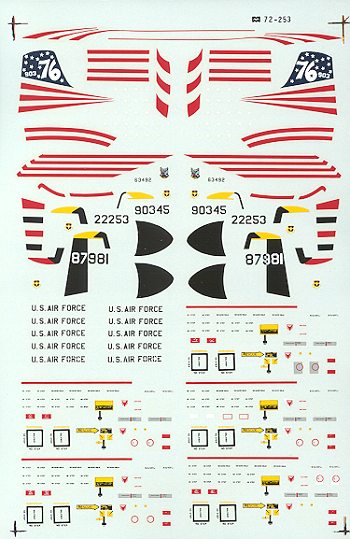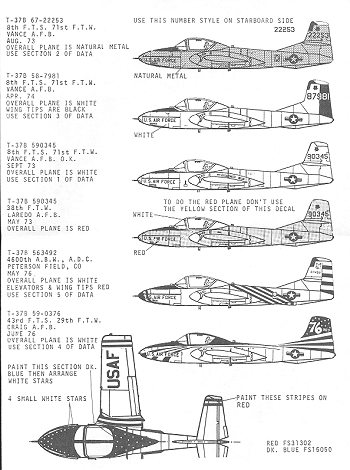 The Cessna T-37 has been around for what seems like forever. It
was the USAF's first purpose built primary jet trainer (the T-33 was developed
from the F-80 Shooting Star). First flying in 1956, the T-37 is finally due to
be replaced by the Pilatus PC-9 aka Texan II. Undoubtedly, it will be operated
by some civilian firm of some sort as that seems to be the way that pilot
training is headed.
The Cessna T-37 has been around for what seems like forever. It
was the USAF's first purpose built primary jet trainer (the T-33 was developed
from the F-80 Shooting Star). First flying in 1956, the T-37 is finally due to
be replaced by the Pilatus PC-9 aka Texan II. Undoubtedly, it will be operated
by some civilian firm of some sort as that seems to be the way that pilot
training is headed.
Anyway, the T-37 is still with us and is powered by a pair of small
centrifugal flow turbojets; engines that are quite similar to what powers most
helicopters. It is easy to maintain, is reliable as gravity, and can handle
foreign object injestion (like birds) without catastrophic failure. Like the
engine, the airframe is equally reliable. No fly by wire, no zero-zero ejection
seats (at least, I don't think they are), minimal navigation aids, simplified
avionics systems and very easy to fly. Just what one wants of a primary jet
trainer.
Color schemes for the T-37 have changed over the years as well. They first
appeared in overall bare metal. This gave way to an overall white scheme. Later,
it was modified to white and dark blue with red lettering. The red lettering
wasn't too popular, so that was changed to white. This is how you will see them
today.
Also changing were the tail markings. Initially there were just some splashes
of color on the fin tip, this changed to some units having various designs on
tail bands and finally to tail codes. All of the aircraft on this sheet are the
earlier schemes of either natural metal or overall white, though there is a
Bicentennial scheme in this sheet.
There are enough common markings (except for insignia) to do five of the six
aircraft shown. Probably the biggest hurdle is that there is no kit of the T-37
(except for the very rare Aurora 1/48 prototype). What is available is an
OA-37 from Hasegawa and the updated copy from Academy. While they look similar,
they are not the same. The biggest problem being that the OA-37 has engines that
are physically larger so the engine area is deeper. The OA-37 has other
differences such as ejection seats, a larger 'thrust attenuator', bulged gear
doors, and no splitter plate. All OA-37s also have wing tanks, so the wing tips
will need to be modified as well. All of these can be fixed except for the
larger wing roots of the OA-37.
 So here is what is on the
sheet:
So here is what is on the
sheet:
First is a natural metal aircraft from the 71st FTW
Next a white 71 FTW aircraft with a black rudder
The third aircraft is also from the 71st FTW at Vance AFB in the standard
white scheme.
The next natural metal aircraft is from the now disbanded 38 FTW at Laredo
AFB.
From the 4600 ABW at Peterson AFB is the nice striped T-37.
Finally a Bicentennial aircraft from another defunct unit, the29th FTW from
Craig AFB.
The instruction sheet is quite good and being a Microscale sheet, has full
common markings placement on the reverse side.
 The Cessna T-37 has been around for what seems like forever. It
was the USAF's first purpose built primary jet trainer (the T-33 was developed
from the F-80 Shooting Star). First flying in 1956, the T-37 is finally due to
be replaced by the Pilatus PC-9 aka Texan II. Undoubtedly, it will be operated
by some civilian firm of some sort as that seems to be the way that pilot
training is headed.
The Cessna T-37 has been around for what seems like forever. It
was the USAF's first purpose built primary jet trainer (the T-33 was developed
from the F-80 Shooting Star). First flying in 1956, the T-37 is finally due to
be replaced by the Pilatus PC-9 aka Texan II. Undoubtedly, it will be operated
by some civilian firm of some sort as that seems to be the way that pilot
training is headed.  So here is what is on the
sheet:
So here is what is on the
sheet: